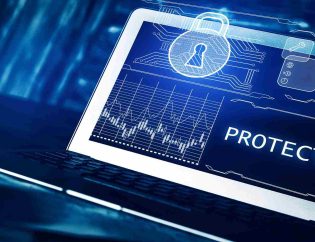
Introduction
In today’s cybersecurity landscape, an endpoint detection system is crucial for protecting businesses from cyber threats. This article explains what an endpoint detection system is, why it’s essential for modern organizations and how it safeguards sensitive data from potential attacks. Investing in a reliable endpoint detection system helps businesses ensure security, data integrity and compliance in a constantly evolving digital environment.
Protect your business with Hyper Secure’s endpoint detection systems. Real-time threat analysis, multi-layered security, and continuous monitoring keep your data safe and secure. #EndpointSecurity #CyberProtection #HyperSecure
— Hyper Secure (@HyperSecure) November 9, 2024
What is an Endpoint Detection System?
An endpoint detection system is a cybersecurity tool designed to monitor, detect and respond to threats across endpoints like computers, mobile devices and servers. These systems offer real-time analysis and automated responses, helping businesses quickly identify and neutralize suspicious activities.
An endpoint detection system provides the necessary defense against modern cyber threats, supporting organizations in their goal to protect valuable assets and maintain operational continuity.
Benefits of an Endpoint Detection and Response System
An endpoint detection and response system (EDR) offers several advantages that make it an essential tool in any cybersecurity strategy. Some of the most significant benefits include:
Real-Time Threat Detection
Identifies and mitigates threats immediately, preventing potential breaches before they escalate.
Improved Incident Response
Enables faster responses to incidents through automated actions, limiting damage.
Centralized Management
EDR systems allow centralized monitoring and control, making it easier for the IT team to manage all endpoints.
Key Benefits:
Reduced Downtime:
Ensures that systems continue running smoothly by preventing disruptions.
Enhanced Compliance:
Meets regulatory requirements by protecting sensitive information.
Scalability:
Can expand to cover additional devices and endpoints as the business grows.
These benefits make endpoint detection and response systems invaluable for organizations of all sizes.
Endpoint Protection System vs. Endpoint Detection System
Though endpoint protection systems and endpoint detection systems both enhance security, they serve different purposes:
Endpoint Protection System:
Focuses on preventing known threats through firewalls, antivirus and basic defenses.
Endpoint Detection System:
Detects unknown or evolving threats, analyzing behavior to identify anomalies in real time.
While endpoint protection systems prevent common attacks, endpoint detection systems provide dynamic responses to new threats. A well-rounded security strategy often includes both systems to ensure complete protection.
Roles of an Endpoint Systems Administrator
An endpoint systems administrator manages and oversees the organization’s endpoint security, ensuring that systems remain secure, updated and compliant. Their responsibilities include monitoring endpoints, installing updates and implementing security policies across devices.
Key Responsibilities of an Endpoint Systems Administrator:
Threat Monitoring:
Continuously observes endpoint activity for potential threats.
Patch Management:
Ensures all endpoints have the latest security patches.
User Access Control:
Manages and restricts access to sensitive data.
With an endpoint systems administrator in place, businesses can maintain a strong defense, supporting the role of the endpoint detection system in overall security.
Importance of System Endpoint Protection
System endpoint protection goes beyond basic defenses, offering a layered approach to security. This type of protection covers every device connected to a network, creating a barrier that prevents unauthorized access, malware and other cyber threats. In a modern business setting, effective endpoint protection is necessary for maintaining data integrity and compliance.
Key Aspects of System Endpoint Protection:
Data Encryption:
Ensures sensitive information remains protected during transfer.
Access Control:
Limits who can access certain data or applications.
Threat Intelligence Integration:
Provides insights into the latest cyber threats, helping the business stay ahead of potential risks.
System endpoint protection, combined with endpoint detection systems, fortifies the business against known and unknown security threats.
Customer Testimonial
“Switching to Hyper Secure’s endpoint detection system has transformed our security approach. We now detect and respond to threats in real-time, giving us confidence that our data is protected.”
Comparison of Endpoint Protection System and Endpoint Detection System
| Feature | Endpoint Protection System | Endpoint Detection System |
|---|---|---|
| Primary Focus | Prevents known threats | Detects and responds to new threats |
| Technology Used | Firewalls, antivirus | Behavioral analysis, machine learning |
| Response Type | Static defense | Dynamic, real-time response |
Conclusion: How Hyper Secure Can Help
Hyper Secure, a leading Endpoint Security Company, provides comprehensive endpoint detection systems to help businesses monitor, detect and respond to potential cyber threats across all devices. Our advanced technology includes real-time threat analysis, multi-layered security measures and continuous monitoring, enabling businesses to operate confidently and securely. Let Hyper Secure enhance your endpoint protection with tailored solutions that meet your unique needs, safeguarding your organization in today’s digital landscape.
FAQs
Q1: What is an endpoint detection system?
A: An endpoint detection system monitors devices in real time, identifying and responding to threats before they escalate.
Q2: How does an endpoint detection and response system work?
A: EDR systems analyze endpoint activity, detect anomalies and provide automated responses to limit security breaches.
Q3: What is the difference between endpoint protection and detection systems?
A: Endpoint protection prevents known threats, while detection systems identify and respond to unknown or evolving threats.
Q4: What does an endpoint systems administrator do?
A: They manage endpoint security by monitoring threats, managing access and ensuring all devices have the latest updates.
Q5: Why is system endpoint protection important?
A: It protects all network-connected devices from unauthorized access, malware and potential data breaches.








